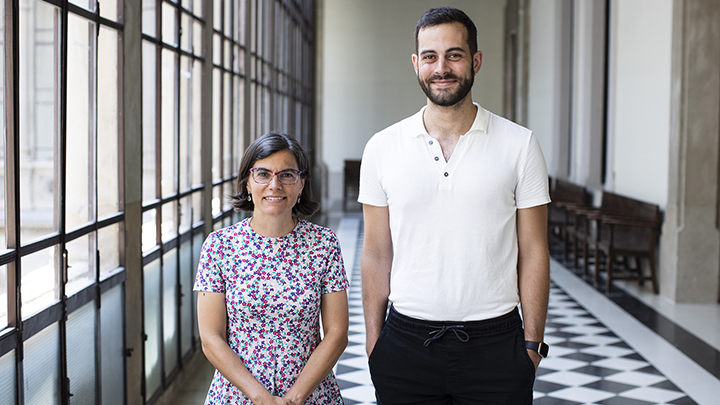Inequality and COVID-19: Barcelona's poorest districts were the most affected by school confinement during the pandemic


“The link between a low socioeconomic level and a poor health state explains these results, and if this vicious circle is not broken, the local health inequity problems will go on and could even worsen in future pandemics. Therefore, the efforts to contain an epidemic or future health emergencies cannot ignore the equity problems regarding health, and this requires a coordinated and transdisciplinary work between different areas such as social services, housing, education and urbanism, among others”, notes Maria Grau, coordinator of the study published in the Journal of Public Health, and Serra Hunter professor at the Department of Medicine of the Faculty of Medicine and Health Sciences of the UB, researcher at the August Pi i Sunyer Biomedical Research Institute (IDIBAPS) and member of the Biomedical Research Networking Center for Epidemiology and Public Health (CIBERESP).
The study, conducted in collaboration with professionals from the Catalan Institute of Health, is also signed by the researchers of the same Faculty of Medicine and Health Sciences Carles Pericas, Gülcan Avcii, Diana Toledo and Carles Vilaplana, as well as Professor Àngela Domínguez.
Six times more likely to close in Ciutat Vella than in Sant Gervasi
The study was based on data from the Department of Education on the primary education public schools in Barcelona, from September 2020 — the beginning of the academic year after the first COVID-19 outbreak — to February 2022, when the regulation on school confinements changed.
The researchers counted, by district, the number of children in isolation or quarantine and the number of days each child stayed home due to the confinement of the school class. Then, this information was compared to the average income of each district, obtained from the per capita disposable family income, an index that measures the income of the residents of a territory for consumption or savings.
The results of the academic year 2020-2021 show a “sustained and significant” upward tendency of the risk of closing a classroom in the districts with lower incomes, to the extent that the probability in Ciutat Vella, the most underprivileged district, was six times higher than in Sarrià-Sant Gervasi, the wealthiest one. “Therefore, children in areas below the average annual income were at a greater risk of a classroom confinement”, notes Carles Pericas, first author of the study.
The pandemic, a catalyst for inequalities
Given the results, the study highlights the importance of learning from the experience of the pandemic and rethinking public policies to deal with similar situations. “Any future measure in public health, whether in a context of a pandemic or a specific transmissible disease control measures, must be approached considering these inequalities and with an understanding of what can magnify them”, they say.
Along with these lines, the researchers note that “it is necessary to understand that the health impact of COVID-19 does not result from morbidity and mortality associated with the infection directly, but the pandemic also acts as a catalyst for all the previously existing inequalities and it magnifies synergies between them, apart from adding its effects: the more vulnerable an individual or population is, the worse health results they will get”.
Guaranteeing the access to canteen services and promoting health literacy
An example of this interrelation between disease and inequality is the fact that the school closures led to the end of essential services in the educational centers, such as the canteen service or the mental health support programs, which —as the researchers say— “could have had a negative impact on the health of most disadvantaged children and students”.
Therefore, according to the new study, in future situations that require school confinement measures, access to complementary services offered by the schools should be guaranteed, as well as equity in accessing the virtual learning sessions. “The initial shift to exclusively online formats during the beginning of the pandemic brought inequalities in access to new technologies and led to an educational loss of students from low-income families”, the researchers note.
Finally, the researchers highlight the need to boost the health literacy of the citizens, in order to “improve appropriate decision-making, which could help reduce the risk of the spread of infections and increase the understanding and adherence to disease-prevention measures”.
A change in contagion patterns during the academic year 2021-2022
The analysis of the academic year 2021-2022 data did not find a relationship between the confinements and the socioeconomic indicators of the districts. The infections in this second period were caused by the Delta and Omnicron variants, which were highly contagious but which only caused mild symptoms or were asymptomatic in many cases. “Incidences from the summer of 2021 to early 2022 reached previously unseen levels and generated unexpected changes in infection patterns”, notes Carles Pericas.
In this sense, the UB researcher thinks the cause of the differences between the two periods is mainly “the great protective effect of previous infections in the most underprivileged communities”, which had suffered most of the infections in the first stages of the pandemic.
References
Pericas, C.; Avcii, G.; Baena-Díez, J. M.; Domínguez À.; Toledo, D.; Redondo, A.; Vilaplana-Carnerero, C.; Grau, M. “Risk of partial school closure for COVID-19 by socio-economic level in the period 2020-22”, Journal of Public Health, June 2023. DOI: https://doi.org/10.1093/pubmed/fdad084
